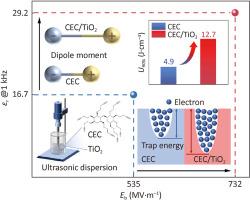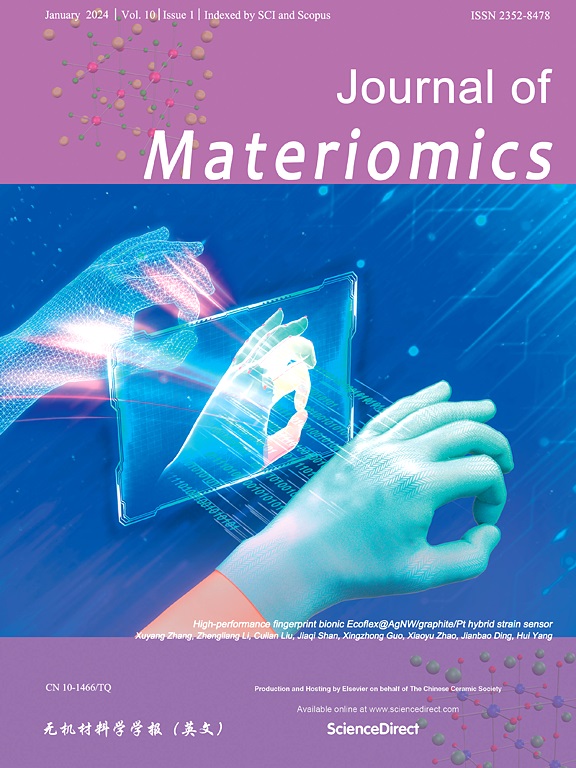Superb energy density in biomass-based nanocomposites with ultralow loadings of nanofillers
IF 8.4
1区 材料科学
Q1 CHEMISTRY, PHYSICAL
引用次数: 0
Abstract
Biomass dielectric polymers hold promise in developing renewable and biodegradable capacitive energy storage devices. However, their typical discharged energy density remains relatively low (<20 J/cm3) compared to other existing synthetic polymers derived from petroleum sources. Here a greatly enhanced discharged energy density is reported in diluted cyanoethyl cellulose (CEC) nanocomposites with inclusion of ultralow loadings (0.3%, in volume) of 30 nm sized TiO2 nanoparticles. Owing to the interfacial polarization introduced by interface, the composite of 0.3% exhibits a large dielectric constant of 29.2 at 1 kHz, which can be described by interphase dielectric model. Meanwhile, the introduction of nanofillers facilitate the formation of deeper traps impeding electrical conduction in CEC, which results in an ultrahigh breakdown strength of 732 MV/m. As a result, a remarkable discharged energy density of 12.7 J/cm3 with a charge-discharge efficiency above 90% is achieved, exceeding current ferroelectric-based and biomass-based nanocomposites. Our work opens a novel route for scalable biomass-based dielectrics with high energy storage properties.


具有超低纳米填料负载的生物质基纳米复合材料的超强能量密度
生物质电介质聚合物在开发可再生和可生物降解的电容式储能设备方面大有可为。然而,与其他现有的石油来源合成聚合物相比,它们的典型放电能量密度仍然相对较低(<20 J/cm3)。据报道,在稀释的氰乙基纤维素(CEC)纳米复合材料中加入超低含量(0.3%,体积分数)的 30 纳米尺寸的 TiO2 纳米粒子后,放电能量密度大大提高。由于界面引入了界面极化,0.3% 的复合材料在 1 kHz 时显示出 29.2 的较大介电常数,这可以用相间介电模型来描述。同时,纳米填料的引入促进了 CEC 中阻碍电传导的深层陷阱的形成,从而产生了 732 MV/m 的超高击穿强度。因此,该材料的放电能量密度高达 12.7 J/cm3,充放电效率超过 90%,超过了目前的铁电基和生物质基纳米复合材料。我们的工作为具有高储能特性的可扩展生物质基电介质开辟了一条新途径。
本文章由计算机程序翻译,如有差异,请以英文原文为准。
求助全文
约1分钟内获得全文
求助全文
来源期刊

Journal of Materiomics
Materials Science-Metals and Alloys
CiteScore
14.30
自引率
6.40%
发文量
331
审稿时长
37 days
期刊介绍:
The Journal of Materiomics is a peer-reviewed open-access journal that aims to serve as a forum for the continuous dissemination of research within the field of materials science. It particularly emphasizes systematic studies on the relationships between composition, processing, structure, property, and performance of advanced materials. The journal is supported by the Chinese Ceramic Society and is indexed in SCIE and Scopus. It is commonly referred to as J Materiomics.
 求助内容:
求助内容: 应助结果提醒方式:
应助结果提醒方式:


